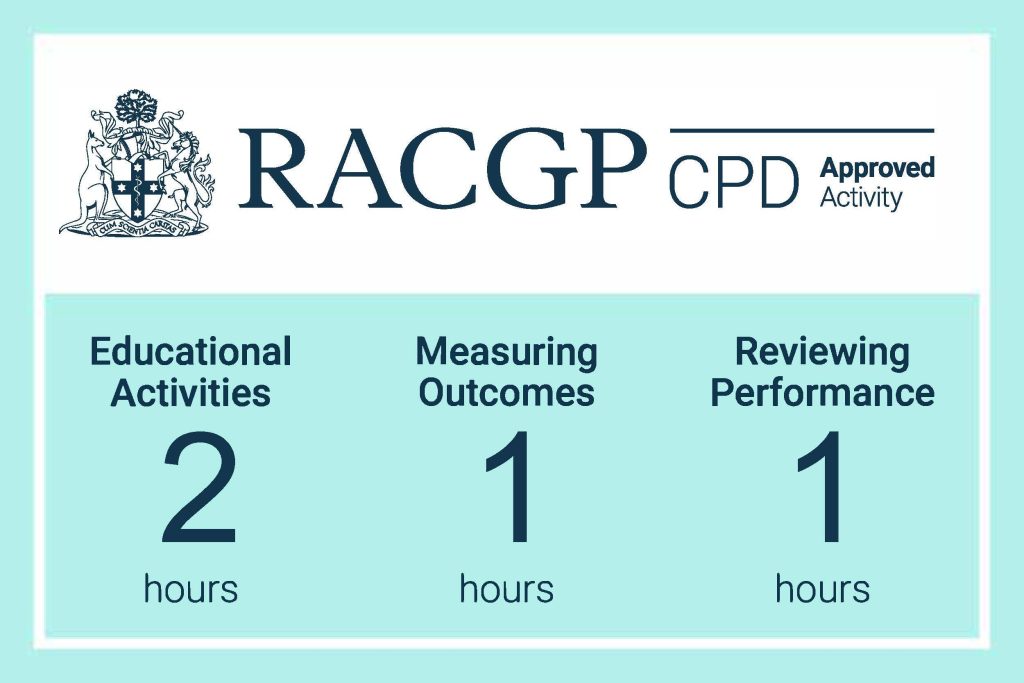Articles / Reducing the risk of long COVID

While we don’t yet have a cure, we do know more about who is likely to get it—and what we can do to help prevent this often-disabling condition.
Approximately 5-10% of people who get COVID will go on to experience long COVID, often leading to considerable disability.
Several factors raise long COVID risk, says rehabilitation and pain physician Professor Steven Faux, AM, Director of the Pain Medicine Unit and establishing director of the Rehabilitation Unit at St Vincent’s Public Hospital in Sydney, Conjoint Professor at St Vincent’s Clinical School, UNSW, and Adjunct Professor in the University of Notre Dame’s School of Medicine..
These include lower socioeconomic status, being female, a history of smoking, and pre-existing chronic diseases or comorbidities—particularly high blood pressure, obesity, heart disease, asthma, diabetes, or a history of cancer.
Age is another factor, with most people coming through Professor Faux’s long COVID clinic aged between 35 and 69. “So it’s not the elderly … we’re actually seeing working age people mostly,” he says.
Severe disease is the biggest predictor of long COVID.
“Admission to a hospital or intensive care unit for acute COVID puts you at higher risk, and severe COVID when there’s a lot of symptoms initially,” Professor Faux says, as does “being bedridden with acute COVID for longer than seven days.”
Infectious disease researcher Professor Brendan Crabb, AC, Director and CEO of the Burnet Institute (a Victorian education and research institute focused on equitable global health outcomes) agrees.
“As an individual, the more severe your primary disease, the more likely you are to get long COVID. It’s a dose dependent issue,” Professor Crabb says. This is why prevention efforts focus on reducing viral load.
Experts have a growing understanding of the pathophysiology of long COVID.
Chronic inflammation and immune dysregulation are known mediators, Professor Crabb explains, with Epstein-Barr viruses, cytomegaloviruses and other herpes viruses often reactivated in people with long COVID.
Research suggests ongoing infection may largely be responsible for long COVID symptoms.
“In other words, COVID, which is thought of as an acute disease of your respiratory tract, is more than that,” he says. “It’s actually a chronic infection in many people and moves into your bloodstream, throughout tissues in the body through that process. There’s literally a viremia. The virus takes residence in other places—your gut, for example, which is why we can look at wastewater to detect virus.”
The virus may continue replicating in the body longer than we thought, he says, citing a community surveillance study that found SARS-CoV-2 RNA was still present in the blood of some people for at least 60 days. The authors estimated that 0.1–0.5% of infections could become persistent, and people with persistent infection had over 50% higher odds of self-reporting long COVID than those without persistent infection.
“You can detect viral proteins in the blood two to three years later in some patients,” Professor Crabb adds. “And the presence of this persisting virus is not a confirmed causation, but it correlates with long COVID,” he says, noting persistent infection is the most likely driver of pathogenic inflammation.
Moreover, there is an “excellent correlation” between self-reporting long COVID and its biochemical signatures, Professor Crabb says.
“It is not psychosomatic. Long COVID is as biomedical as a broken leg,” he says.
We’ve known for a while that fibrin plays a role in acute severe disease and long COVID—but not how this worked.
The SARS-CoV-2 virus “hijacks the clotting system for its own purpose,” with recent research showing its spike protein binds to fibrin, turning it into a “toxic form,” Professor Crabb says.
The activated toxic form of fibrin lays down deposits on blood vessel walls, he explains, driving a “big inflammatory response” that causes the microvascular damage responsible for neurological and cardiovascular symptoms. It also suppresses natural killer cells.
“So the process, firstly, is SARS-CoV-2 specific. Other viruses don’t do this,” he says. “And it turns out this toxic form of fibrin is the driver of inflammation, not the result of inflammation. So it’s an underlying cause.”
We will find other, more complex mechanisms at work in long COVID, he adds, noting “medicine is never going to be that simple.”
Long COVID prevention is based on a three-level hierarchy, Professor Crabb says.
“The first is to not get COVID,” he says, noting this is not particularly realistic.
The second is to reduce the number of times you get COVID. “If you’ve had three infections, your chances of getting long COVID in your lifetime are three times roughly what they were if you had one infection in your lifetime.”
The third is to get as low a dose of the disease as possible if you do get infected, he says.
We can therefore help prevent long COVID with strategies that lower either infection risk or viral load.
“We know vaccination reduces the rates of long COVID,” Professor Crabb says. In fact, he advocates for wider vaccine eligibility in Australia because of its power to reduce severe illness and long COVID incidence. “Massive 20 million people population studies have now shown this. And the reason that probably works is lowering the dose.”
Professor Faux agrees, citing a study that found 9.5% of vaccinated people had persistent symptoms two years after severe acute COVID infection, compared to 14.6% of unvaccinated controls.
What about vaccination for people who already have long COVID?
Evidence indicates about 21% of them will have a temporary worsening of their long COVID symptoms and/or their acute vaccination response, Professor Faux says. “So they’ll have a sore arm for a bit longer, maybe two weeks.” While most people do not notice any change, about 16% will experience an improvement in long COVID symptoms after getting vaccinated, he adds.
GP and public health physician John Litt, Associate Professor in the Discipline of General Practice at Flinders University, says public understanding of long COVID is limited and many people are not getting the vaccine boosters which reduce incidence. To help counter this trend, experts from four Australian universities (Flinders, UQ, Sydney and QUT) have developed the COVID Risk Calculator (CoRiCal)—a free, independent and evidence-based tool that estimates the risks and benefits of COVID-19 vaccination.
The risk calculator can help patients understand their risk of developing long COVID and see how a booster will reduce their risk.
Professor Crabb notes COVID is almost exclusively an indoor air quality disease.
“So breathing clean air is the key,” he says. Wearing an appropriate mask (P2 or N95) can reduce the risk of infection and reduce the dose if you are in a poorly ventilated or crowded area.
Professor Faux says taking PaxlovidTM (nirmatrelvir/ritonavir) within five days of acute infection prevents hospitalisation by 68% for severe acute COVID of the delta strain. “It probably works for other strains and if it prevents hospitalisation, it will also decrease the incidence of long COVID.”
Lagevrio® (molnupiravir) may prevent long COVID in people who have mild COVID, he adds, “but its role in the prevention of hospitalisations following acute COVID is less clear and so its effect on long COVID incidence is also much less clear.”
For people who are immunocompromised, there is some evidence for remdesivir, he says, noting this requires an IV infusion—which may not be practical in GP.
“The monoclonal antibodies are not being shown to be as great for that group either,” he adds.
Surprisingly, a randomised controlled clinical trial of ivermectin, fluvoxamine and metformin found a 41% reduction in long COVID incidence in people who took a titrated dose of metformin for two weeks (500 mg on day one, 500 mg BD on days two to five, then 500 mg mane/1000 mg nocte to day 14), starting within seven days of symptom onset.
While not currently recommended under any guidelines, it could be worth trying metformin in appropriate at-risk patients, Professor Faux says, particularly people with chronic lung disorders.
It’s a “pretty low-risk drug” GPs are used to prescribing, he says, noting you need to look out for lactic acidosis. “And a lot of people find it gives them a bit of nausea, but that’s a fairly low dose. So I’m not sure that would happen as much.”
While we don’t know exactly how it works, “we think it affects the microbiome as well as having an immunological effect,” he explains.
Professor Crabb says metformin seems to have antiviral properties and probably helps reduce viral load in the acute phase of illness.
This article is based on a series of Healthed podcasts. You can listen to them here.

Menopausal Hormone Therapy - What Dose of Estrogen is Best?

Cardiovascular Benefits of GLP1s – New Evidence

Oral Contraceptive Pill in Teens

RSV and the Heart


Modified but kept in place
Eliminated entirely without replacement
Maintained as is
Completely replaced with an alternative system
Listen to expert interviews.
Click to open in a new tab
Browse the latest articles from Healthed.
Once you confirm you’ve read this article you can complete a Patient Case Review to earn 0.5 hours CPD in the Reviewing Performance (RP) category.
Select ‘Confirm & learn‘ when you have read this article in its entirety and you will be taken to begin your Patient Case Review.
Menopause and MHT
Multiple sclerosis vs antibody disease
Using SGLT2 to reduce cardiovascular death in T2D
Peripheral arterial disease
